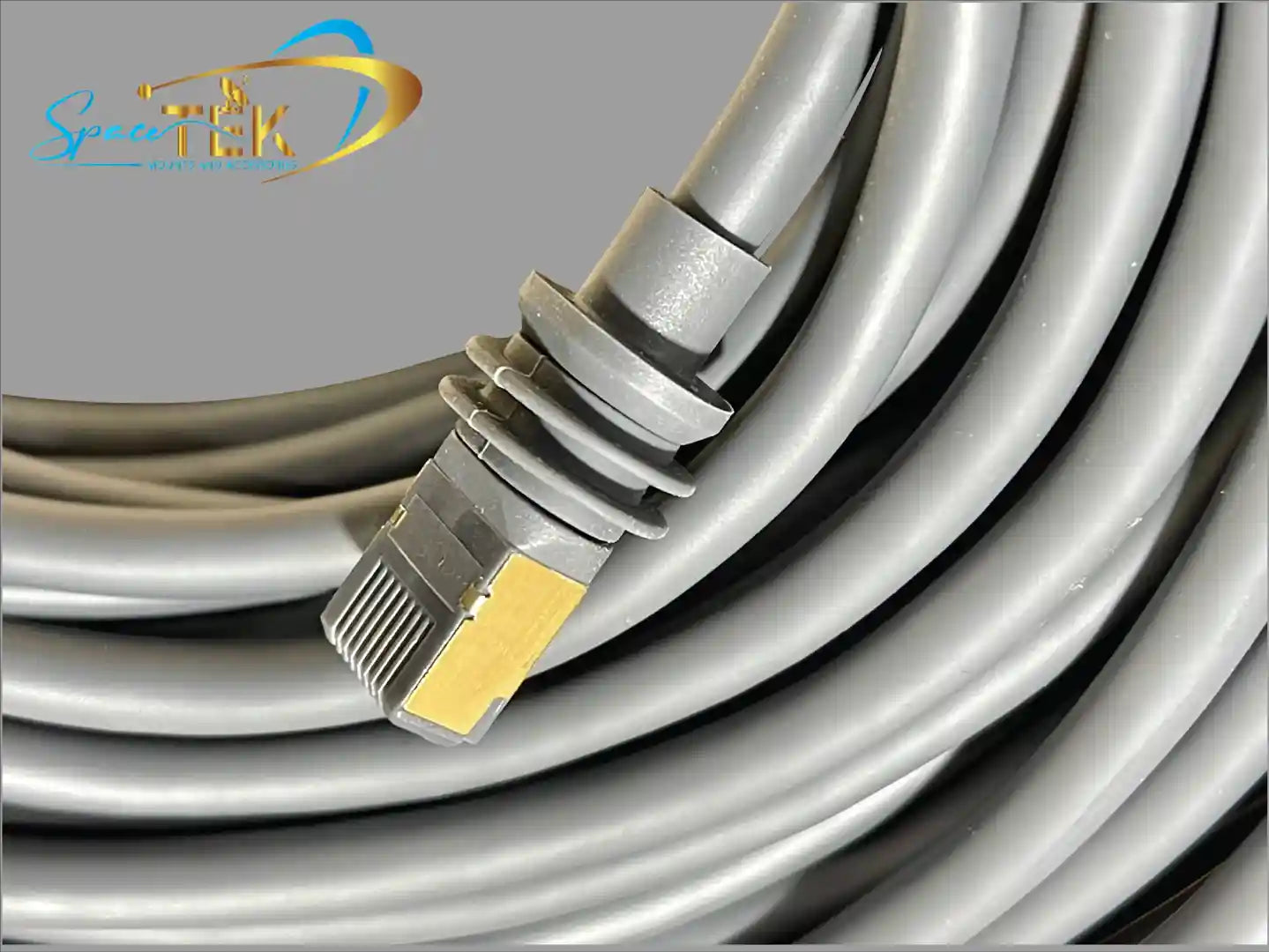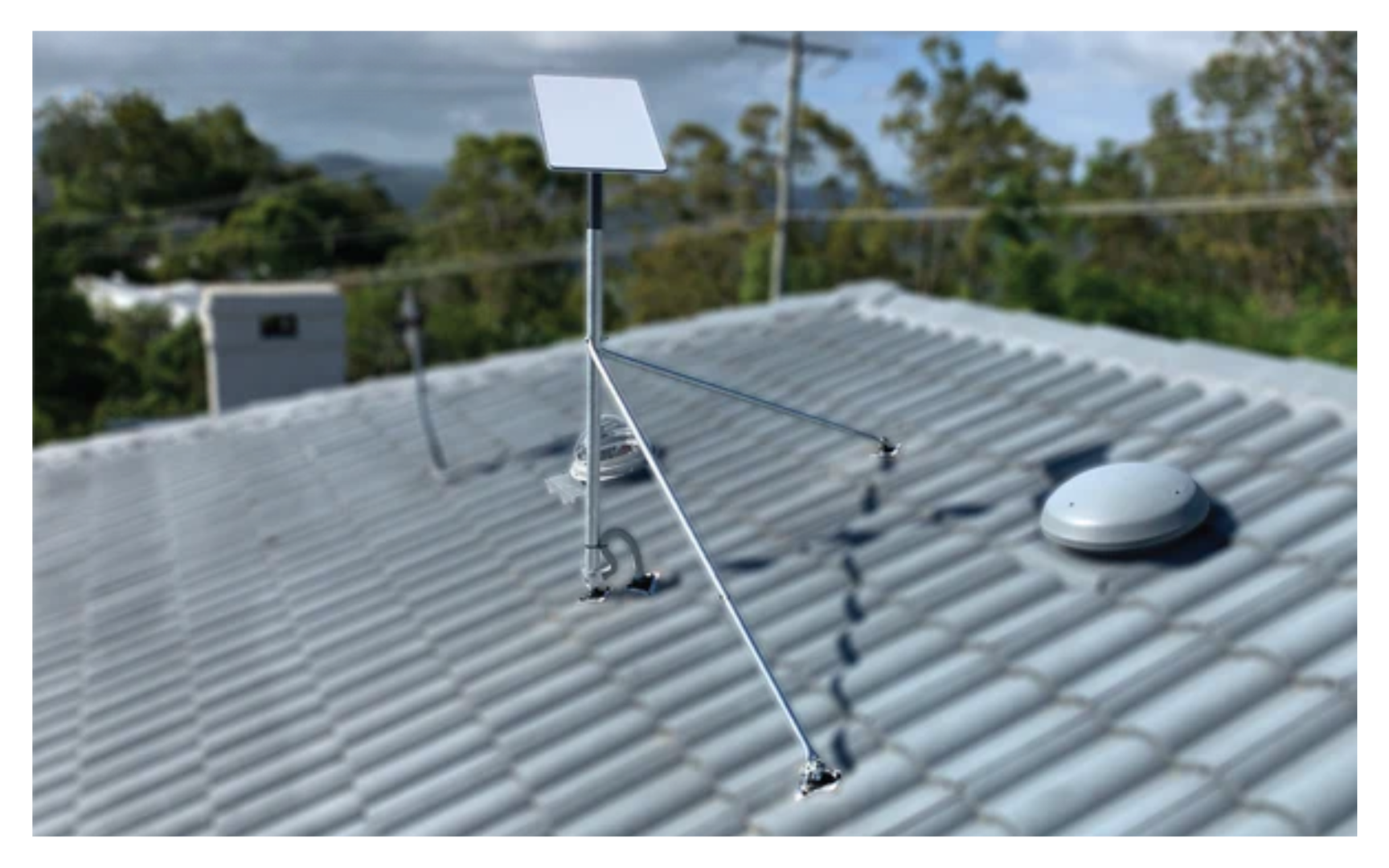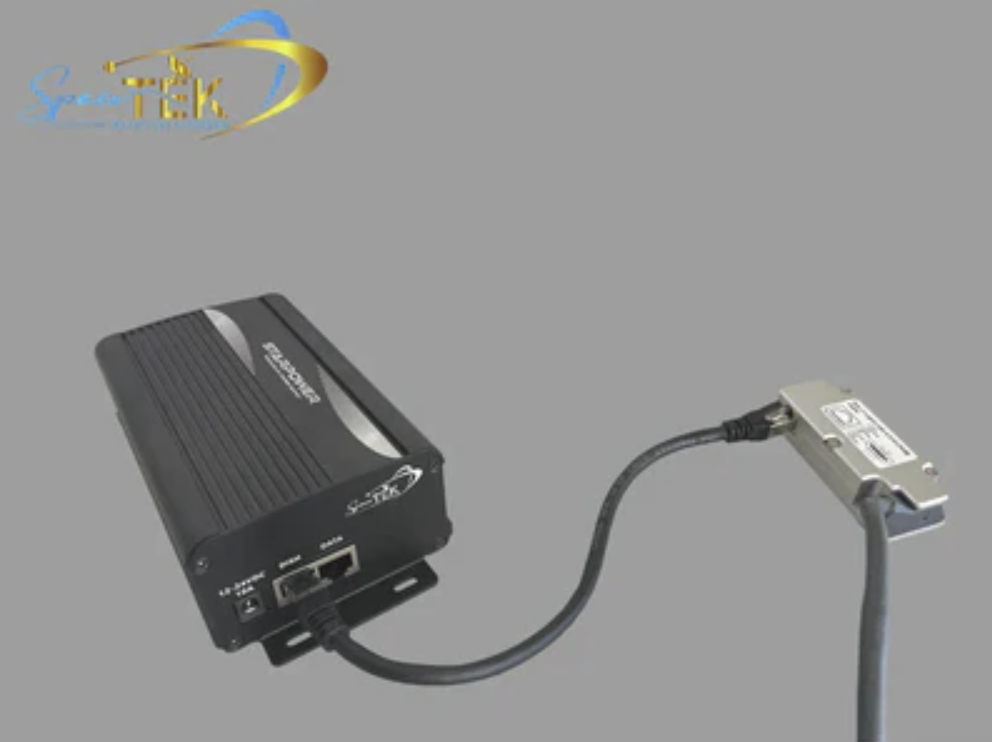Why Your Starlink Satellite Cable Matters for Reliable Internet
The Starlink Satellite Cable is the vital link carrying power and data between your dish and router. Designed for Australia's harsh conditions, this flat, ribbon-style cable delivers speeds up to 1 Gbps.
Quick Facts About Starlink Satellite Cables:
- Length Options: 15m (Standard/Gen 3), 25m (Performance), 30m (Gen 1), or 50m (Enterprise)
- Design: 5mm thick, 8cm wide flat cable for easy wall routing
- Materials: Copper-clad steel core with UV-resistant polymer coating
- Performance: Power over Ethernet (PoE) delivering up to 1 Gbps speeds
- Durability: Built to withstand extreme Australian weather conditions
- Installation: Requires 19.05mm (¾") hole for wall penetration
Its flat design makes routing through walls and tight spaces much easier than with traditional round cables.
The cable's copper-clad steel core and polymer coating provide essential weatherproofing for Australia's extreme climates, ensuring a reliable connection for rural users.
I'm Aaron Wroblewski. With over 25 years in satellite communications, I've helped thousands of Australians through SpaceTek Australia. Proper cable installation is key to avoiding dropouts and ensuring reliable internet.
Understanding the Starlink Cable: Key Specifications
The Starlink Satellite Cable is engineered to handle the unique demands of satellite internet in Australia's tough conditions. It's a vital lifeline, carrying both high-speed data and power to your dish.
Physical Characteristics: More Than Just a Wire
Unlike bulky round cables, Starlink's cable has a distinctive flat, ribbon-like design, about 5mm thick and 8cm wide. This flat profile simplifies routing through walls and tight spaces.
Its core uses copper-clad steel conductors to maintain signal strength over long distances, protected by a durable polymer coating.
The outer layer is UV-resistant and weatherproof, built to withstand Australia's extreme heat, rain, and wind. This ruggedness ensures year-round reliability for rural users.
Technical Performance: The Power and Speed Behind Starlink
The Starlink Satellite Cable supports data speeds up to 1 Gbps, allowing for smooth 4K streaming, video calls, and large downloads.
It uses Power over Ethernet (PoE) technology, so a single cable transmits data and powers the dish. This eliminates the need for a separate power source near the dish.
Specialized weatherproof connectors create a tight, moisture-resistant seal, ensuring a solid connection in harsh weather.
For more technical details, you can explore Starlink's official technology page.
How the Starlink Cable Differs from Traditional Cables
Compared to traditional cables, the Starlink cable's flat, flexible design makes installation much simpler. Standard RJ45 connectors on ethernet cables aren't weatherproof, whereas Starlink's proprietary connectors are engineered for secure, outdoor performance.
This superior design and material choice give the Starlink Satellite Cable better durability than standard ethernet or coaxial cables, which degrade or are difficult to route outdoors.
| Feature | Starlink Satellite Cable | Traditional Ethernet (Cat5e/6) | Traditional Coaxial Cable |
|---|---|---|---|
| Design | Flat, ribbon-like (5mm thick, 8cm wide) | Round, flexible | Round, often thick and stiff |
| Primary Function | Data & Power (PoE) | Data only | Data or Video |
| Connectors | Proprietary, weatherproof | Standard RJ45 | Standard F-type |
| Outdoor Use | Purpose-built for weather exposure | Requires special outdoor-rated versions | Can degrade over time outdoors |
| Routing Ease | Very easy through small gaps | Moderate difficulty | Challenging due to stiffness |
| Max Speed | Up to 1 Gbps (or higher) | Up to 1 Gbps (Cat5e), 10 Gbps (Cat6a) | Varies by standard |
| Durability | Excellent in harsh environments | Poor outdoors without protection | Moderate, prone to damage |
| Cable Management | Clean and streamlined | Can become messy | Difficult due to stiffness |
The Starlink Satellite Cable is specifically engineered for delivering reliable satellite internet in Australia.
A Guide to Different Starlink Cable Types and Compatibility
Starlink hardware has evolved, and so have the cables. Understanding the differences between generations is crucial for compatibility and proper installation.
Each new hardware generation brought improvements, and the cables adapted. Here's what you need to know.
Cables for Standard & Actuated Kits (Gen 1, Gen 2)
Early adopters with the Standard (Circular) cable (Gen 1) have a 30-meter PoE cable permanently attached to the dish. This robust cable cannot be easily swapped.
The Standard Actuated (Gen 2) cable for the rectangular dish introduced a detachable 15-meter PoE cable, a major improvement for installation and maintenance.
For more insights, our Gen 2 Gear Guide: Top Accessories for Your Starlink System covers everything you need.
Cables for High-Performance and Gen 3 Kits
As Starlink's offerings expanded, cable specs evolved to match the performance of newer hardware.
The High-Performance cable kit includes a 25-meter detachable PoE cable, designed for users needing more robust connectivity, like remote businesses.
The Enterprise cable kit features a 50-meter detachable PoE cable, ideal for complex installations on large properties or industrial sites.
The latest Standard Kit (V4/Gen 3) cable includes a 15-meter detachable PoE cable.
If you're working with the latest hardware, The Ultimate Guide to Starlink Gen 3 Compatible Accessories will help you make the most of your system.
The Unique Starlink Mini DC Power Cable
The Starlink Mini is designed for portability and efficiency. It uses a 15-meter detachable DC power cable instead of Power over Ethernet.
This DC power cable design makes the Mini highly power-efficient and ideal for mobile use with portable batteries, 12V systems, or solar power. The lack of PoE simplifies the system and reduces power consumption.
Its flexible power source requirements make the Mini perfect for camping, remote work, or any off-grid location.
For everything you need to complement your Mini's portability, The Definitive Guide to the Best Starlink Mini Accessories covers all your options.
Choosing the right Starlink Satellite Cable ensures your system performs optimally for your specific needs.
Installing and Caring for Your Starlink Satellite Cable
Proper installation and maintenance of your Starlink Satellite Cable are essential for reliable, high-performance internet that can withstand Australian weather. A poorly installed cable can cause dropouts and slow speeds, but a proper installation ensures a rock-solid connection for years.
Best Practices for Routing Your Cable
Successful installation starts with planning your cable route. Rushing this step often leads to problems later.
- Map your path: Plan a direct route from the dish to the router, avoiding areas where the cable could be stepped on, pinched, or damaged. While durable, the cable is not indestructible.
- Avoid sharp bends: Use wide, sweeping curves around corners to avoid damaging the internal conductors.
- Wall penetration: A 19.05mm (¾") hole is needed. This small size helps maintain your home's weather seal.
- Use routing kits: For professional results, use SpaceTek's Cable Routing Kits, designed for Australian conditions and various wall types.
- Seal entry points: Properly seal all entry points with quality silicone and grommets to prevent water, pests, and drafts.
For more tips, check out our guide on Starlink Accessories: How to Get Everything You Need.
Can You Splice or Extend a Starlink Satellite Cable?
Many users ask about splicing or extending the Starlink cable. However, this requires careful consideration.
Starlink's official position is to not modify the cable. Splicing, extending, or combining cables can void your warranty and is not recommended. The risks include signal loss, interference, and slower speeds. The cable is an engineered system, and modifications disrupt its performance.
Water damage is a major risk. An improper splice can allow moisture in, damaging the cable and your expensive Starlink equipment.
To protect your investment and ensure reliable performance, we strongly advise against any DIY modifications. Instead, focus on careful installation planning to utilize the original cable's length effectively.
Troubleshooting Your Starlink Satellite Cable
Even with a perfect installation, cable issues can occur. Fortunately, many are easy to diagnose.
- Check for symptoms: Common signs of cable issues include connection loss, intermittent service, or speed drops. Always check the cable first.
- Physical inspection: Walk the cable's entire length, looking for cuts, nicks, abrasions, or signs of animal damage, especially in tight spots.
- Check connections: Ensure the cable is fully seated at both ends. A loose connection is a common cause of intermittent service.
- Use the Starlink app: The app is invaluable for diagnostics. It provides real-time connection status and can help identify cable-related problems. Download it from the App Store for iOS.
- Power cycle the system: A simple reboot can often resolve temporary glitches. Unplug your system for 30 seconds, then plug it back in.
If you're still having issues, contact SpaceTek support. Our experienced team can help diagnose the problem and guide you to a solution.
Where to Purchase High-Quality Starlink Accessories
To get the most out of your Starlink system, using high-quality accessories from a reputable source is crucial for performance, durability, and compatibility.
Ordering Accessories from the SpaceTek Shop
At SpaceTek Australia, we design and manufacture a wide range of accessories to enhance your Starlink setup. Our online shop is the best place to find high-quality products engineered for Australian conditions.
We offer everything from custom mounts to cable routing kits, and our product pages clearly state compatibility with your dish generation to avoid any mistakes. Creating an account streamlines your purchase and allows us to provide better support. We offer fast, Australia-wide shipping because we know that when your internet is down, every day counts.
Our An Essential Guide to Buying Starlink Accessories walks you through the process.
Why Choose SpaceTek-Designed Products?
When you buy from SpaceTek Australia or our authorized partners, you are getting products designed specifically for the demands of the Australian environment. Unlike generic accessories, our solutions are engineered for a perfect fit and long-term durability.
Always double-check compatibility with your Starlink generation before buying. Customer reviews also offer valuable real-world insights from users with similar setups.
For a comprehensive look at our product range, check out Starlink Accessories: Where to Shop for Starlink Accessories.
Frequently Asked Questions
Here are answers to common questions about the Starlink Satellite Cable.
What is the standard length of a Starlink cable?
The standard cable length depends on your Starlink kit:
- Gen 3 Standard & Gen 2 Standard Actuated: 15 meters (49 ft)
- Gen 1 Circular Dish: 30 meters (100 ft)
- Performance Kit: 25 meters
- Enterprise Kit: 50 meters
- Starlink Mini: 15-meter DC power cable
It is important to plan your installation around the provided cable length, as modifying or extending the cable is not recommended.
Can I use a regular Ethernet cable for my Starlink?
No. We are often asked if a regular Ethernet cable can be used, but it is not possible for several reasons:
- Proprietary Connectors: Starlink uses unique, weatherproof connectors. Standard RJ45 Ethernet plugs will not fit.
- Power over Ethernet (PoE): The Starlink cable delivers specific power requirements to the dish. Standard Ethernet cables are not rated to handle this power safely and may cause the dish to malfunction.
- Durability: Standard Ethernet cables are for indoor use and will quickly degrade outdoors. The Starlink cable's UV-resistant coating is essential for Australian conditions.
Using non-approved cables risks damaging your equipment and will void your warranty. It's not worth the risk.
Is the Starlink cable waterproof and can it be buried?
The Starlink Satellite Cable is weather-resistant and UV-protected, designed to withstand Australia's extreme sun, wind, and rain.
However, it is not rated for direct burial or underwater use. Soil contains constant moisture and chemicals that can degrade the cable, and it's vulnerable to physical damage from ground shifts or animals.
If you must run the cable underground, you must protect it with a UV-resistant PVC conduit rated for direct burial. This provides necessary protection while allowing for proper routing. While durable, using the cable beyond its specifications will lead to future problems.
Conclusion
The Starlink Satellite Cable is the lifeline of your internet connection. Its specialized design and specifications are crucial for reliable service. We've covered how its flat design simplifies installation and its weather-resistant construction handles Australia's harsh climate.
Proper installation is key: plan your route, avoid sharp bends, and seal entry points. Avoid splicing the cable to protect your equipment and warranty.
When replacing your Starlink Satellite Cable or adding accessories, choose authentic products. At SpaceTek Australia, we provide high-quality, rust-resistant mounting solutions and other accessories designed and manufactured for Australian conditions, from coastal salt spray to outback dust.
Your internet connection is only as strong as its weakest link. A damaged cable or poor installation can compromise your connectivity. Ensure you have the right cable and a proper installation to stay online when it matters most.
Ready to optimize your Starlink setup? Explore our full range of Starlink Parts and Accessories and find how the right components can transform your satellite internet experience.




Leave a comment
This site is protected by hCaptcha and the hCaptcha Privacy Policy and Terms of Service apply.